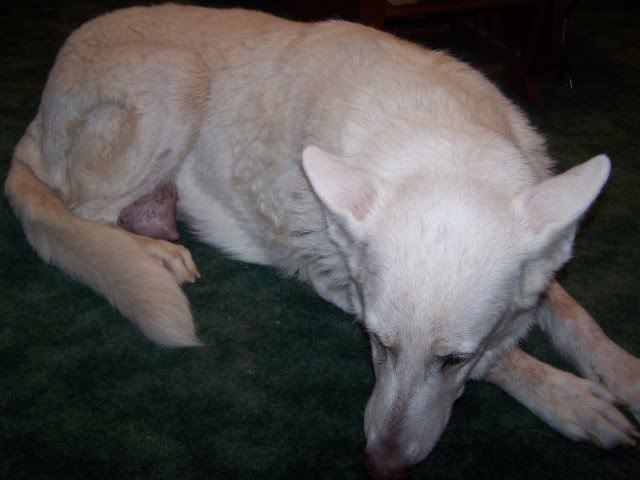--->Immiticide Unavailability Info Click Here<---
Right now, with Immiticide taking a break in our relationship, a break that we did not want, nor did we ask for, talking about how to treat heartworm is more an academic exercise. Hopefully soon it will be practical to talk about the types of treatment.
But we can ALWAYS think about prevention! Ask your vet office if there are any current coupons for the medicine your pet is on, and check out the manufacturer's websites to see if they have any specials.
But for those who were not protected from the disease, how to treat? To make it easy, there are two basic methods to treat heartworm:
1. Fast kill
2. Slow kill.
This post is going to be all about fast kill.
Within the fast kill there is super fast kill which used to be the way to go, and is now not recommended, and then modified fast kill, the slow pitch softball of heartworm treatment.We're not even going to talk about the super fast kill since it's no longer recommended.* It's old timey, like playing baseball with no batter's helmet. Or something like that.
How does fast kill work? The modified slow pitch fast kill, that is:
1. Using the
AHS recommendations for treatment,
you do the month of doxycycline and inactivity before treatment begins, as soon as the dog is diagnosed with heartworm disease.
2. When this is done, the dog goes in for one injection of Immiticide.
You saw Mila getting hers. That is the first injection of Immiticide, and that kills the adult worms. The adult worms are the big ones, and that is why (here we go again) you keep the dog inactive for that month. Leash potties only, crate rest is best, just like the song says (what songs are we listening to? the i in our iPod stands for immiticide) so that those worms are less likely to form a clot.
 |
| Busy Bee |
So after that injection you carefully keep the dog cool (like air conditioner cool) for a month of restricted activity. You can use "brain toys" to keep them mentally occupied in their crates, but always supervise when a dog has something in their bed. You don't want to give them their special bee and come home to find the dog all alone in their locked crate and no bee to be found.
You also need to be careful about feeding fatty snacks to a dog, particularly a dog that is not moving. One, because we always worry about
pancreatitis (we do? YES, we do - do you know how much fat is in that peanut butter kong?) and two, because we don't want our dog to put on too much weight during treatment. Mila started at 54#, which was a little underweight for her, which was how we wanted it, and is now 58# after one month of inactivity and boredom eating.
3. After a month you take the dog in for injection number two of Immiticide.
 |
| Freedom? |
Oh, your dog is so happy to go for a ride, finally, after a month of doing nothing! To the park? To the dog food store? Maybe for doggy ice cream?!?!?! And then you pull up and they see...it's the vet office. <sigh>
Well, unless they are like Mila, who is so happy to go to her vet office. "Hello girls," she says to the receptionists, "where's my bedroom going to be today? Which techs do I get? Oh, they're wonderful. I hope everyone who's working on me got a good night's sleep!" Well, you get the idea, most dogs aren't quite as happy as Mila is at the vet office.
While there, your dog will get one injection, same procedure as the first. Ouch again.
They may have you pick up your dog in the afternoon after observing them throughout the day for any of the bad things (gum color change, vomiting, panting, nose bleeds, fever, coughing, etc.) or they may keep them over night.
All so that the very next day they can...
4. Give your dog injection number three of Immiticide.
They put that on the other side of the dog's back. And more ouch. Again your dog is observed, and generally there is some real discomfort after having both sides of the back used to inject these big, fat needles of arsenic based (threw that in there to make sure you are paying attention but it's true, THAT arsenic) Immiticide into them.
After these two injections the dog may stay one more night for observation or they might come home with you for...
5. One more month of keeping cool and keeping quiet
From the VIN: After treatment, the patient must be strictly confined for one month following the final treatment. No walks, no running around. The dog must live the indoor life. The reason for this is that embolism to some degree is, to some degree, inevitable and it is important to minimize embolism-related problems. Exercise increases heart rate and oxygen demand and we need the heart to rest during this recovery period. (so does panting - so keep them cool)
* We lied. We will say a little about what the old super fast kill was:
In the two-dose super fast treatment, the dog receives one injection on one day and a second injection the next day instead of waiting a month.
From the VIN again: Keep in mind, too many worms dying at once creates circulatory shock. The AHS recommends treating all patients with the three-dose protocol as it creates a more gradual kill of the adult worms, which is safer in terms of embolism and shock. (so who's talking about clots now, huh?!?)
AHS sums up nicely the difference in treatment success between super fast kill and slow pitch fast kill:
Melarsomine ('round these parts we call it Immiticide) has not been shown to have any activity against worms less than 4 months old. The two-injection protocol (super fast kill) listed on the product insert for treating class 1 & 2 heartworm disease kills only about 90% of the adult worms. The three-dose alternate protocol (slow pitch fast kill) listed for treating class 3 heartworm disease kills 98% of the worms. (see http://www.heartwormsociety.org/veterinary-resources/canine-guidelines.html#10 for more)
Staging of the disease and use of the two-injection protocol has failed to adequately ensure treatment success. Therefore, regardless of the stage of the disease, the three-injection alternative protocol is the treatment of choice of the American Heartworm Society and several university teaching hospitals, due to the increased safety and efficacy benefits and decreased possibility that further treatment with melarsomine would be necessary. Furthermore, by initially killing fewer worms and completing the treatment in two stages, the cumulative impact of worm emboli on severely diseased pulmonary arteries and lungs is reduced.
So that's the current recommendation from the AHS, in a world with Immiticide. As always, we have our information about the current unavailability at the top of each new post.
Slow kill and the caval surgery after Mila's next post!

































